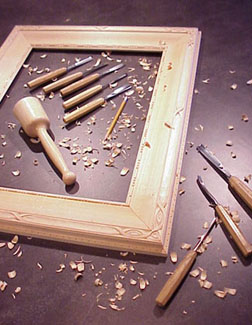|
By ANONYMOUS ART DEALER
Q: How do Boston galleries generally handle framing for a solo show. Who usually pays for it, the artist or the gallery? A: The multiple answers to this question can make your head spin. All galleries will handle the framing issue differently, so I'll try and simplify things and list a few common scenarios that any artist should be prepared to deal with. Keep in mind, this is really for solo exhibitions. If you're in a group show, you will most likely pay for framing, and there will be no discussion about compensation. And, before I continue, I do want to clarify in advance... When I say "base price" I'm referring to the normal retail price of the artwork. When the price is listed at shows, sometimes the cost of the frame is added and sometimes it is separate. Either way, the artist and gallery should know the base price of the work and know how much was added for framing. The collector doesn't necessarily need to know which is why sometimes there is one price listed for framed artwork.
Q: When pricing a show, does the artist come in with a figure that they want and then the gallery tacks on their 40-50% commission, or does the price the artist tells the gallery already take into account that they will take a 40-50% commission? A: I've actually answered this issue in the past for BRS, but I'll piece together a new answer from old ones... Doubling your prices for a show is considered bad practice. Generally, an artist should expect to make only half of what they would selling their work out of their own studio. The exposure, representation and promotion that a gallery provides is probably worth it. As an artist, you should think of yourself as a business, and giving up half of your profit to a gallery should be considered the "cost of doing business." Your established prices should be standard whether work is sold from your studio or a gallery, and in any state for that matter. Without getting too crazy explaining why, here is one stupidly important reason: If a collector knows that he/she can purchase artwork at a discount from the artist's studio, they will not purchase artwork from the gallery. If there is no sale at the gallery, the dealer will will not make any money and will go out of business. Without a gallery... Well, you get the point. There are collectors out there that bank (literally) on an artist's inexperience and will cruise "Open Studios" for less expensive deals. As an artist, you will also find that collectors want to make private "studio visits," which really means that they want to purchase work directly from you, hoping that they will get an artwork at a signifant discount (without the gallery in the picture). The reality is that once you establish a price point within a gallery, that should be the price of your work regardless of where and when it is sold. I'm not talking about a 10-15% discount, which can be found in a gallery anyway, but truly, anything beyond 25% is insulting to your reputation and your gallery. And, don't forget, if you make a connection with someone because of an exhibition, you should always reward the gallery with their commission, or better yet, have them handle the sale. Keep the collectors honest, and your gallery happy and in business.
|


 "Advice For Artists" can be read in series in
"Advice For Artists" can be read in series in

